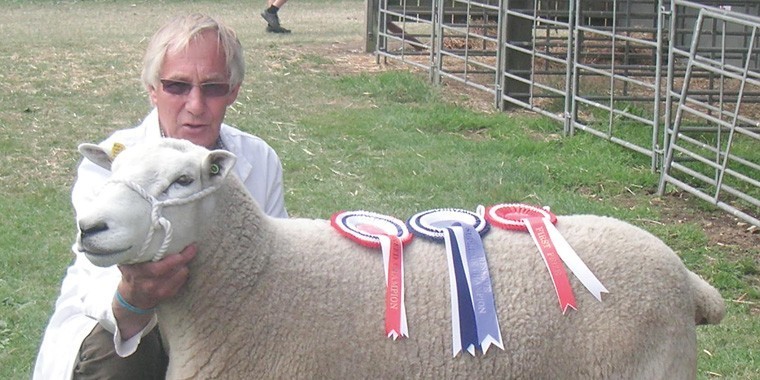Regarded by some as bit of an oddity and of no commercial interest, my view is that they are part of our long and interesting farming heritage and a very important pool of genetic material that once they are lost are lost forever, but that one day we may just need.
I have also had a long term interest in the Weald and Downland Open Air Museum at Singleton. The latter is within my natural home range – having been brought up in nearby Chichester – and is a facility that I have seen evolving over the past 30 years. These two interests come together each year for the Rare Breeds Show at Singleton. It is a lovely show in really delightful setting and with ideal, warm and sunny weather this year.
Having not been to the show for several years I was really impressed with the number and the quality of the sheep forward which were well presented by very enthusiastic breeders. Many of the breeders are smallholders, another breed regarded by some as a bit of an oddity and of no commercial interest, again a sentiment with which I do not agree. Without many of these smallholders a number of our rare breeds would probably (if not certainly) have already disappeared, forever. There are also some breeds considered at one time as rare breeds which almost certainly owe their current growth in popularity and commercial success to committed smallholders.
The Lleyn provides a classic example of this. Listed as a rare breed in the 1960s but supported by a number of local enthusiasts in its home area, sheep numbers gradually began to grow in popularity and importance. By 1974 the Lleyn Sheep Society had 20 members; my pedigree flock, founded in 1989, is flock number 559 and current pedigree flock numbers are into the three thousands.
This does not include the huge number of commercial flocks of pure breed Lleyn sheep – some of several thousand ewes – established over the past couple of decades all over the UK. In 40 years or so the Lleyn has gone from a rare breed with a limited number of enthusiastic, small scale, geographically isolated breeders to a point where it has significant national importance and is now the most numerous lowland breed and the most rapidly expanding breed of sheep in the UK.
A tremendous amount of this growth was driven forward, particularly in the eighties and nineties, by what would be referred to by many as smallholders: small scale committed and very enthusiastic breeders. The Southdown has a similar story, having been lifted from rare breeds status only a few years ago now to a breed with a rapidly growing commercial reputation, again driven forward largely by a number of very enthusiastic small scale producers.
Similar examples may be found in other species (e.g. Longhorn and Beef Shorthorn cattle, Berkshire and Gloucester Old Spot pigs) where enthusiastic, small scale breeders have committed a lot of resources, both time and financial, not just to maintaining their rare breeds but to improving the quality of the stock that they produce.
Some of the breeds have developed to fit in with the current production and market environments: others have made use of traditional attributes to establish niche markets and production situations. Some of the rare breeds sheep keepers are established farmers indulging their interests. Others are enthusiastic amateurs, but amateurs who often bring some very professional management skills and business expertise from other sectors to their farming interests.
These are not people to be dismissed lightly as “smallholders,” which is frequently used as a derogatory term by some “proper farmers.” I suspect that a significant proportion of the quality, terminal sires produced in the UK will be produced in flocks of less than 100 ewes. Many of these are producers with an excellent eye for both stock and the attention to detail required to produce top quality breeding stock.
I wonder how many of the sheep currently on the rare breeds list we will see assume some level of commercial importance at some time in the future or providing genetic material for the enhancement or improvement of other breeds. Plant breeders regularly look to the genetics of wild ancestors of crops to improve disease resistance, for example. If we are faced with a ban on tail docking in the UK (it has happened in other European Union countries) will we look to some of the northern short tailed breeds to produce sheep that do not need their tails docked? Who knows how production patterns will change in the future and what type of sheep we will need: as I said, once it is lost it is lost forever.




